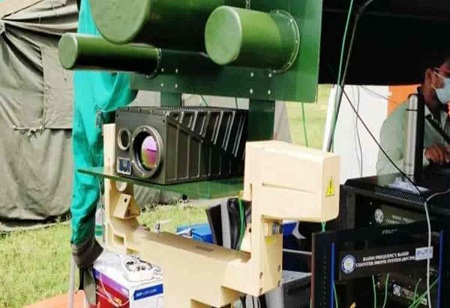“India has to start preparing for the future generation of warfare,” said Chief of Defence Staff (CDS) General Bipin Rawat, after a first of its kind drone strike dropped two bombs at Indian Air Force (IAF) station in Jammu. Speaking on the need for acquiring
anti drone technology, General Rawat said drones, swarms and other such elements change the very nature and character of warfare. He said that
Indian Army is quite concerned and has been working on countering drone technology.
Challenges in detecting Drones
Hostile Drones can be used to deploy explosives, smuggle contraband or gather intelligence on sensitive assets, and the proliferation of low cost Unmanned Aerial Vehicles (UAVs) has led to an increase in incidents. Drones have low Radar Cross Section (RCS), slow speed and a small size which makes the task of detection difficult, and thereafter, identification and localisation as well.
How Anti-drone Technology can be used
After this incident, Chief of Defence Research and Development Organisation (DRDO) G. Satheesh Reddy said “the counter drone technology developed by DRDO could provide the armed forces with the capability to swiftly detect, intercept and destroy small drones that pose a security threat”. The anti-drone system can detect and jam drones at a distance up to 3 km and it uses a laser weapon to fire at targets that are 1 to 2.5 km away.
Israel’s Defence Technology company Rafael has also developed something called Drone Dome which identifies and intercepts incoming drones. Besides the collection of static radars, radio frequency sensors and cameras, the Drone Dome also offers ‘a 360-degree coverage’ and is capable of jamming the commands being sent to a hostile drone and blocking visuals, if any, that are being transmitted back to the drone operator.
However, its main feature of discussion is the precision with which it can shoot high powered laser beams to bring down targets.
The company claims that Drone Dome works under all weather conditions and at night time as well. Anti-drone technology is deployed to protect areas such as airports, critical infrastructure, large public spaces such as stadiums, military installations and battlefield sites. The anti-drone technology includes ways to counter stationary as well as high speed moving targets.
Modern anti drone radar systems may use a variety of radar technologies, including ESA (Electronically Scanned Array), staring radar and micro Doppler depending on requirements like range, size of protection zone, number of simultaneous targets to track and ability to deal with environmental clutter. Also, they provide 3D airspace tracking and use sophisticated signal processing techniques to accurately detect and identify drones.
